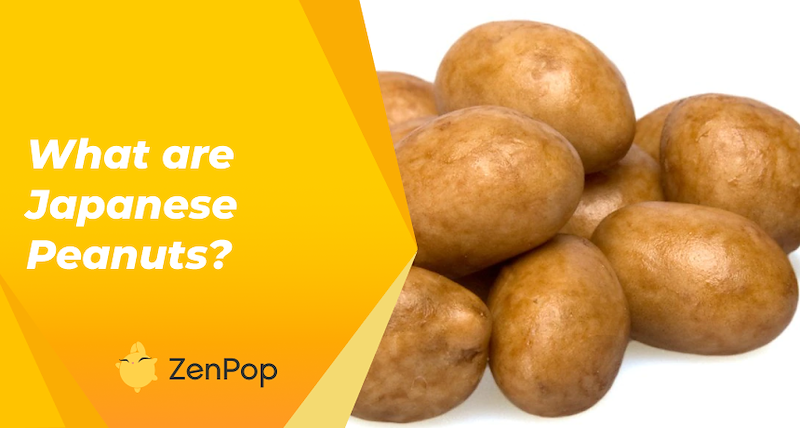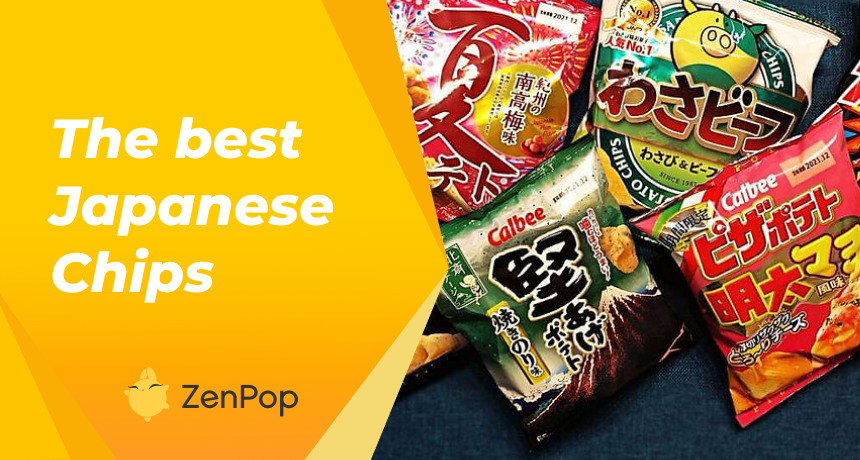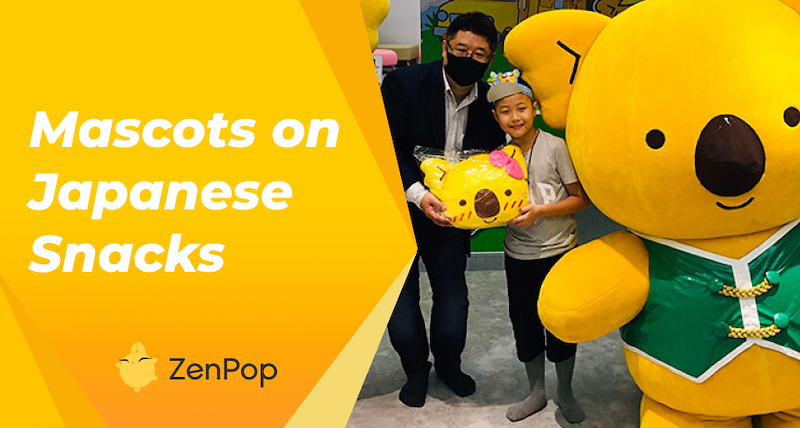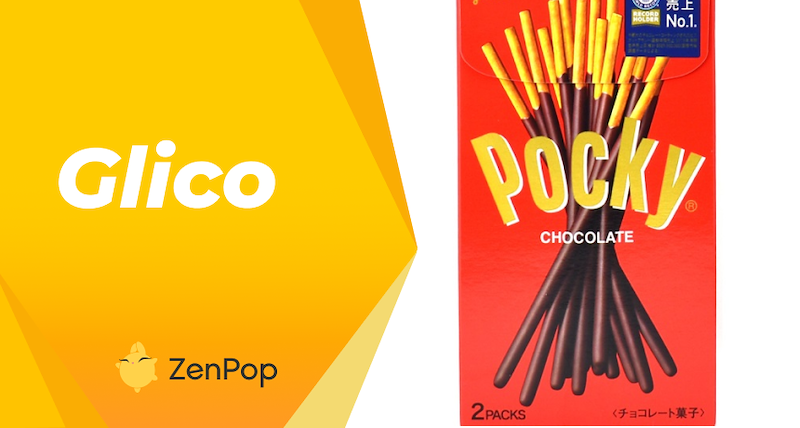
Glico: The Japanese Confectionnery Behind Pocky
If you’ve ever looked into travelling around Osaka, you might have heard of Dotonbori, one of the most popular tourist destinations in the area. On top of the delicious street food and exciting nightlife around the Dotonbori canal, you might be aware of one of Osaka’s most famous landmarks: the running Glico man.
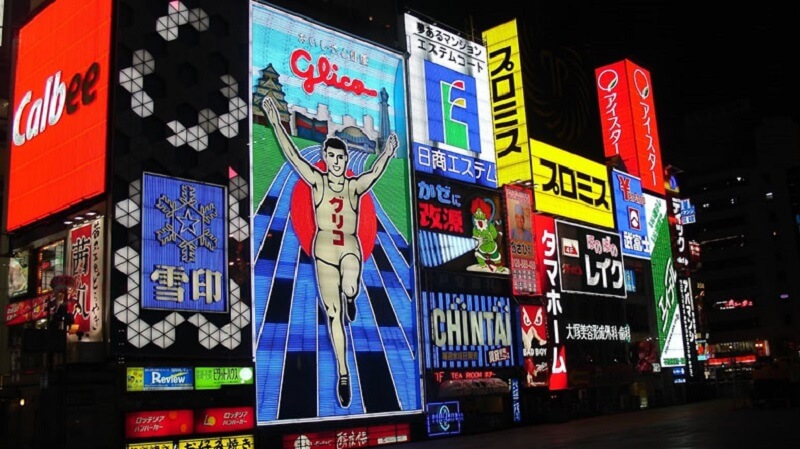
This is an advertisement for Glico, one of the biggest producers of snacks and confectionery not only in Japan, but also all over the world. You may know them for their most popular franchise: Pocky! Let’s discover more about Glico, the company behind so many of our favorite snacks.
What was Glico's first product?
Who made Pocky? That's a question you may be asking yourself. It all started with caramel: Glico-Caramel and the Running Man. In 1919, the founder of Glico, Riichi Ezaki, created a special caramel candy called Cuchieco. This caramel candy was specifically made as an energy product, containing a special kind of glycogen that was extracted from oysters. The original product boasted that it would give you the energy to run 300 meters just from eating a single piece, and had the famous Glico runner painted on the package. These started selling in 1992, when Riichi Ezaki established Ezaki Glico Co. Ltd. The word “Glico” comes from the word “glycogen,” which was the featured ingredient in the original caramel candies.
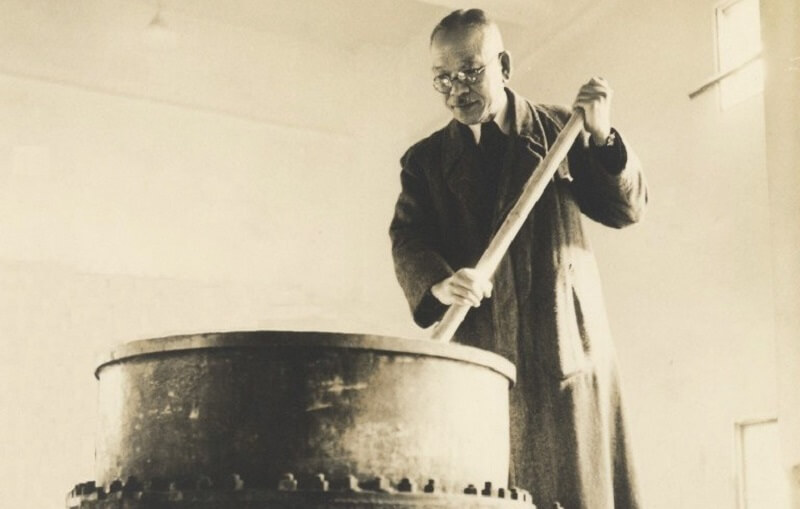
The war eventually took its toll on the company, and sadly, almost all domestic and foreign manufacturing facilities were destroyed by around 1945. Riichi Ezaki had a plan, however, and stated that even if their factories were destroyed, the remaining asset that they had was the Glico name itself. They revived production of products like Bisco and the Glico Caramel, and eventually introduced new products that became bestsellers until now. These are PRETZ, which was introduced in 1963, and Pocky, which was introduced in 1966 and is Glico’s best-selling product. Pocky and Pretz are so popular that November 11th is designated as “Pocky Day,” due to the two 1s looking like a set of pocky sticks!
Branching out from snack products, Glico also put research and development into desserts and dairy products, resulting in the introduction of the best-selling pudding in Japan, “Putchin Pudding,” which you may have seen due to its unique and innovative packaging.
Since 1996, Glico has started putting out more and more products that align with its goal of making food that not only tasted good, but also had health benefits. For example, they released Calorie Control Ice, which was a sweet tasting ice cream with low sugar content and calories, the GABA “mental balance chocolate” which included the Gamma-Amino Butric Acid (GABA) compound which helped reduce excitability in parts of the brain and aided focus, and Libera, which released in 2016, a chocolate containing dextrin, which suppresses the absorption of fats and sugars so that you could eat some chocolate without feeling too guilty.
What are Glico's most famous products?
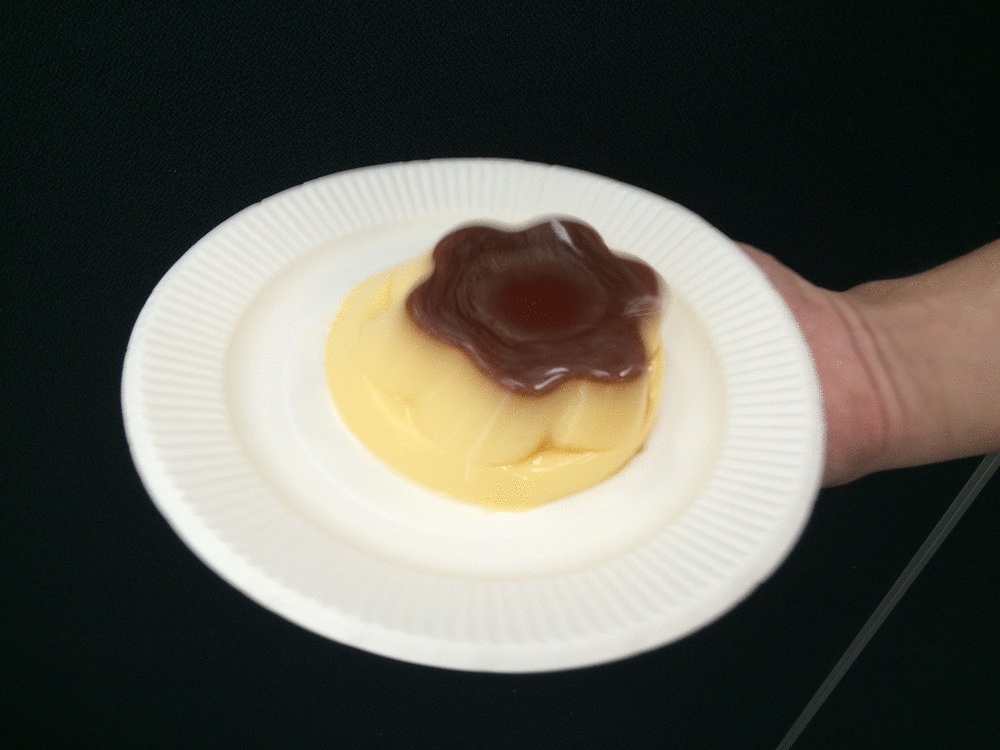
Pocky is Glico’s best-selling product, boasting 10 billion packages sold worldwide since its release in 1966. These chocolate covered biscuit sticks are a perfect balance of chocolate cream and crunchy biscuit, that is popular with all age groups. They come in rectangular boxes and are easy to find all over Japan and also around the world. Pocky comes in many different flavors as well, though the chocolate one remains the most popular around the world. These include common flavors like Strawberry Cream and Cookies and Cream, and rarer favorites like Almond Crush and Matcha. It’s hard to go wrong with a box of pocky all to yourself, or to share!
Pucchin Pudding
Have you ever seen how Japanese people open a package of pudding? There is a mechanism at the bottom of the plastic cup that introduces air into the vacuum, allowing the pudding to drop onto a plate for you to eat. This viral pudding packaging was introduced by Glico in their Pucchin pudding, which is the most popular pudding in Japan. This is a very sweet custard “pudding jelly” treat with caramel sauce, which is a delightful sweet treat for whenever you get a craving! The inexpensive pudding cups also come in mini-sizes and big sizes, and special premium versions which use a honey-based syrup rather than a caramel one.
Pretz
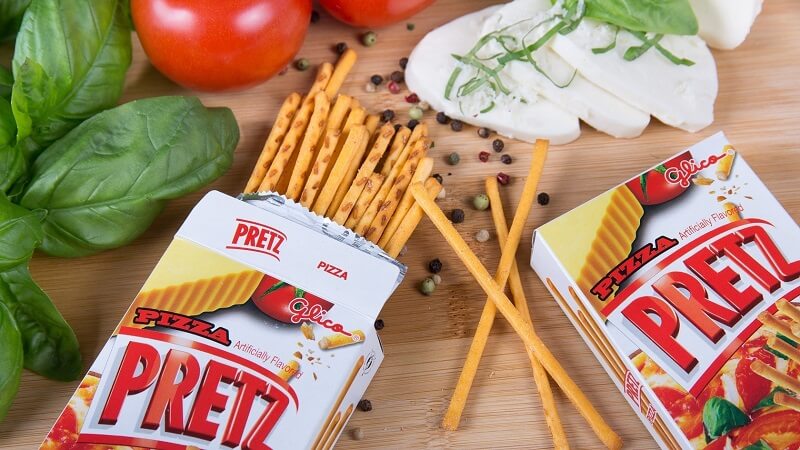
Unlike the sweet treats mentioned above, Pretz is a savory snack. While stick-like in nature like Pocky, these are based off of the German pretzel snack. Released in 1963, the Pretz products come in a variety of flavors– from somewhat sweet to nice and salty. When you’re on the go, these are convenient snacks to carry around and share with others. The most popular and original flavor is a lightly salted plain pretzel, but they also offer pizza flavor, sweet corn, and “roast” flavor!
If you are not sure which one to get, Pretz or Pocky, you may find this guide helpful.
What is Glico’s Running Man in Dotonbori?
If you ever get the chance to go to Dotonbori in Osaka, you might see crowds taking pictures with the gigantic Glico advertisement for their running man. This is a popular meeting spot as well, since you can see the Glico advertisement as its one of the largest signs in the area. So how did the Glico signboard come to be?
Glico has tried several marketing strategies in the past, from including toys in their boxes of the Glico Caramel Candy, to including vending machines with projectors that played 20-second parts of a 5-part short movie to encourage people to buy 5 candies at a time. This evolved into signboards, and soon, the neon signboard was installed at Dotonbori from 1925 to 1943.
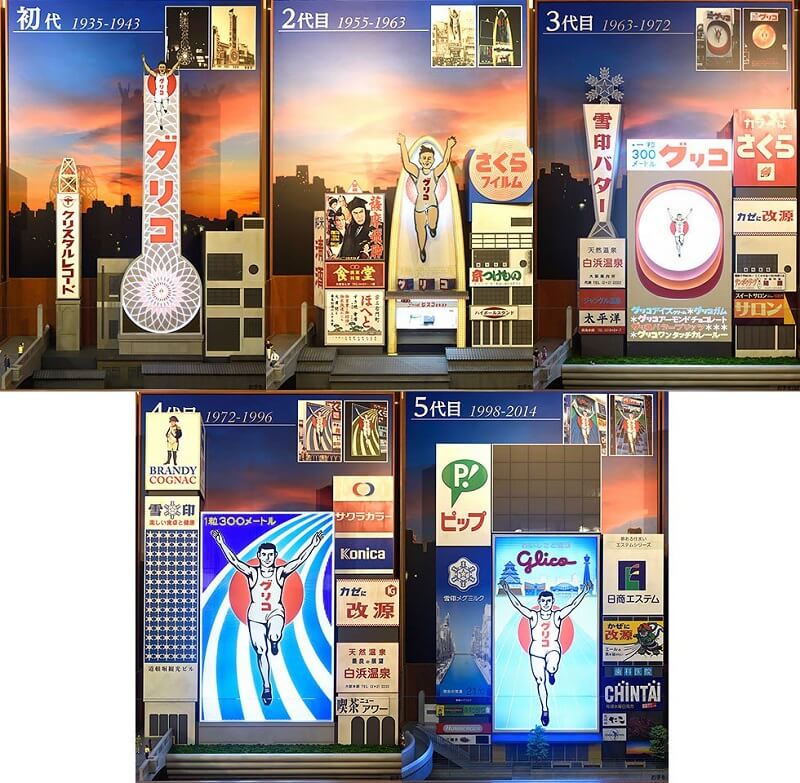
Since the initial installation, the Glico signboard has gone through 6 total generations of signs. In the beginning, it was a simple straight sign that stood 33 meters tall, bearing the company name and the running man on top.
This was later replaced by the second generation sign after the war, which included a concert stage underneath for performances and other events. This sign was installed from 1955 to 1963.
The third generation Glico signboard was surrounded by 412 neon lights, and included a fountain in the center that made rainbow effects with the water.
What we might now be more familiar with is the design with the blue running track, which ran from 1998 to 2014. Around the signboard, they included pictures of important destinations such as Osaka Castle and the Osaka Aquarium.
What does the Glico sign look like today?
The latest generation of the sign is beautifully lit in the nighttime, and features Glico’s company slogan as well as their logo above the image of the Running Man on the blue racetrack. The LED background displays famous tourist spots around Japan, to show him running around the country and seeing its sights. Though the Glico Running Man may have started as a simple advertisement, it has cemented itself as one of Japan’s most recognizable tourist attractions.
Pro-tip: if you want to get a picture with the Glico sign, a feature on their global site teaches you where you can best take a photo with it!
What’s your favorite Glico product? Why not try out one of Zenpop’s Snack box, so you can discover some of their innovative healthy snacks, which are not only satisfying and delicious, but also contain some nutritional benefits. Or, you could play it safe with a box of everyone’s favorite, Pocky! Our sweets packs have a mix of different snacks from different companies for everyone to enjoy, so you can get a taste of Japanese culture right at your doorstep.


